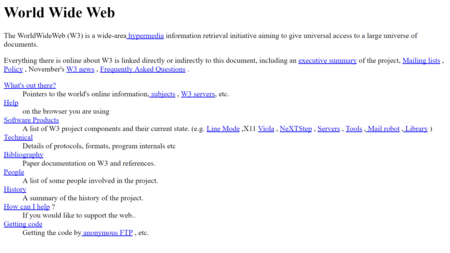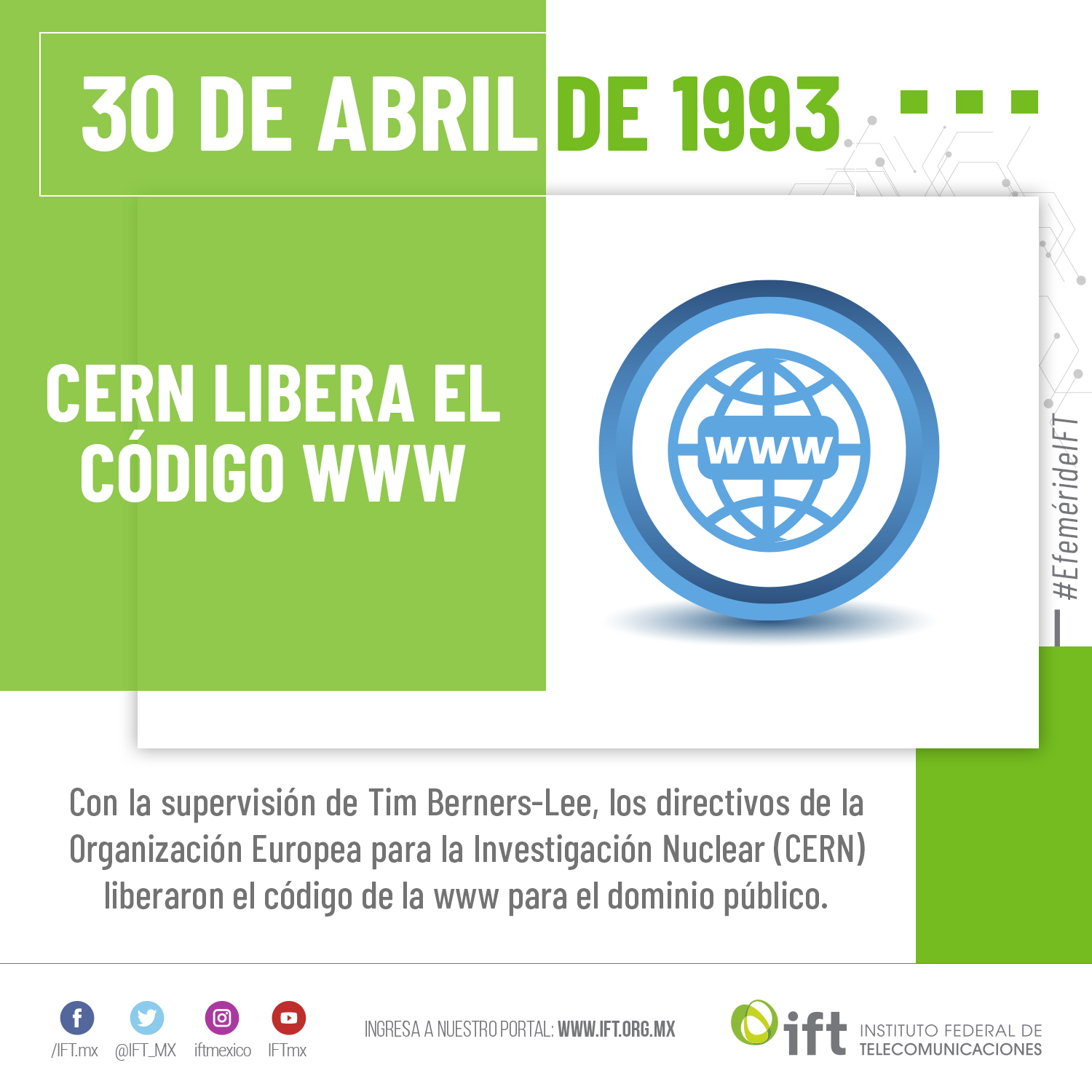El 23 de agosto de 1991 fue la primera vez en la historia que usuarios externos al CERN pudieron empezar a acceder a su última creación. Llevaba dos años siendo desarrollada por el científico informático Tim Berners-Lee, y se trataba de una red con la que poder conectar varios ordenadores para compartir información.
Se llamaba World Wide Web y al haber sido el 23 de agosto el día en el que se abrió al mundo hoy se celebra el Día del Internauta. Y viene bien recordar cómo era navegar en Internet en aquellos tiempos, porque hoy en día estamos tan acostumbrados a utilizar la web que no se nos ocurre pensar que empezó a abrir sus puertas sólo hace 25 años.
Los primeros pasos de la World Wide Web

Después de graduarse en Oxford, Tim Berners-Lee entró a trabajar como ingeniero de software en el CERN en junio de 1980. Allí se dio cuenta que los muchos científicos tenían bastantes problemas para compartir la información, ya que había muchos datos repartidos en diferentes ordenadores, pero había que loguearse en cada uno para ir accediendo a ellos.
Fue entonces cuando empezó a trabajar en un proyecto que presentó en marzo de 1989. Se trataba de una propuesta para la gestión de la información (Information Management: A Proposal), en la que proponía solucionar los problemas de pérdidas de datos utilizando un sistema distribuído de hipertextos. Todos los ordenadores estarían conectados entre sí para que fuera más fácil acceder a la información de cada uno.
El proyecto no causó demasiado entusiasmo, pero tal y como explican en la web de la Web Foundation, su jefe le permitió en septiembre de 1990 que empezase a trabajar en él. Para octubre de ese mismo año Berners-Lee ya había desarrollado tres tecnologías fundamentales para sacarlo adelante: el lenguaje HTML, las direcciones URI (comúnmente conocidas como URL) y el protocolo de transferencia de hipertextos HTTP.

Había llegado el momento de ponerlo en práctica, y el 20 de diciembre de 1990 se publicó la primera página web de la historia, aunque hasta el 6 de agosto de ese año no estuvo completamente operativa. Actualmente la web ya no existe, pero la W3 sigue manteniendo una copia para que veamos su simplicidad.
Un año después, el 23 de agosto de 1991, los primeros usuarios no pertenecientes al CERN empezaron a ser invitados a acceder a su red, lo que hace que hoy se celebre el Día del Internauta. Así es como la World Wide Web pasó de ser un proyecto local a uno global, a lo que ayudó que en abril de 1993 el CERN anunciase su decisión de hacer gratuito el código del proyecto, permitiendo que todo el mundo pudiese colaborar en su expansión.
Los primeros pasos de la World Wide Web
 La primera web del CERN desde el primer navegador
La primera web del CERN desde el primer navegadorHay que entender que por aquel entonces las conexiones eran muchísimo más lentas que las que utilizamos hoy, por lo que tardaron algunos años en poder utilizarse elementos como fondos o imágenes adjuntas. De hecho, como podemos ver, la primera web jamás creada era extremadamente simple, con texto plano y unos cuantos enlaces.
La navegación en estas primeras páginas por lo tanto era extremadamente sencilla. En un índice se nos mostraban los enlaces a las diferentes categorías o artículos, y podíamos navegar entre ellas pulsando sobre los hipervínculos. Nada más, no había publicidad que nos entorpeciera ni menús confusos, todo era simple, plano y muy rápido.

Las primeras páginas que se crearon después fueron de hecho muy parecidas. Tras visitar el CERN en septiembre del 91, a los miembros del Stanford Linear Accelerator Center les encantó la idea de la WWW, y decidieron crear su propia página web, que también sería la primera en ser creada en los Estados Unidos.
Según un informe del MIT, para finales de 1993 ya se habían creado 623 páginas web en todo el mundo, como la del Instituto Nacional Holandés para la física subatómica, Bloomberg.com, The Internet Movie Database, MTV o Wired.com. Lamentablemente la mayoría de estas primeras versiones no se han conservado, aunque quedan imágenes de algunas de ellas que nos ayudan a entender lo extremadamente sencillas que eran.

En 1993 también nació Aliweb, el que es considerado el primer motor de búsqueda creado para indexar la World Wide Web. En 1994 le siguieron otros proyectos como WebCrawler o la famosa Jerry's Guide to the World Wide Web, que un año después cambió de nombre para pasar a llamarse simplemente Yahoo.
Estos buscadores ofrecían un buen método para poder encontrar páginas sin necesidad de saber su dirección, por lo que no tardaron en popularizarse y ganar peso en la red. En 1997, los estudiantes de la Universidad de Standford Larry Page y Sergey Brin crearon Google, que como ya sabemos ha acabado convirtiéndose en el buscador más importante.
Actualmente la web sigue en constante evolución. Tim Berners-Lee abandonó el CERN en 1994, y fundó una World Wide Web Consortium (W3C) con la que lleva desde entonces dirigiendo el camino abierto de Internet, aprobando por ejemplo hace dos años la estandarización del HTML5.
Desde el principio Berners-Lee creó la web con la idea de que fuera un espacio descentralizado, universal, consensual y no discriminatorio. Esto le ha llevado varias veces a quejarse de tendencia a la centralización que está viendo en ella o a pedir la creación de una constitución global de los derechos digitales para evitar que estos sigan infringiéndose por todas partes.
En Xataka | Aniversario de la apertura de la World Wide Web: 25 webs para 25 años





















